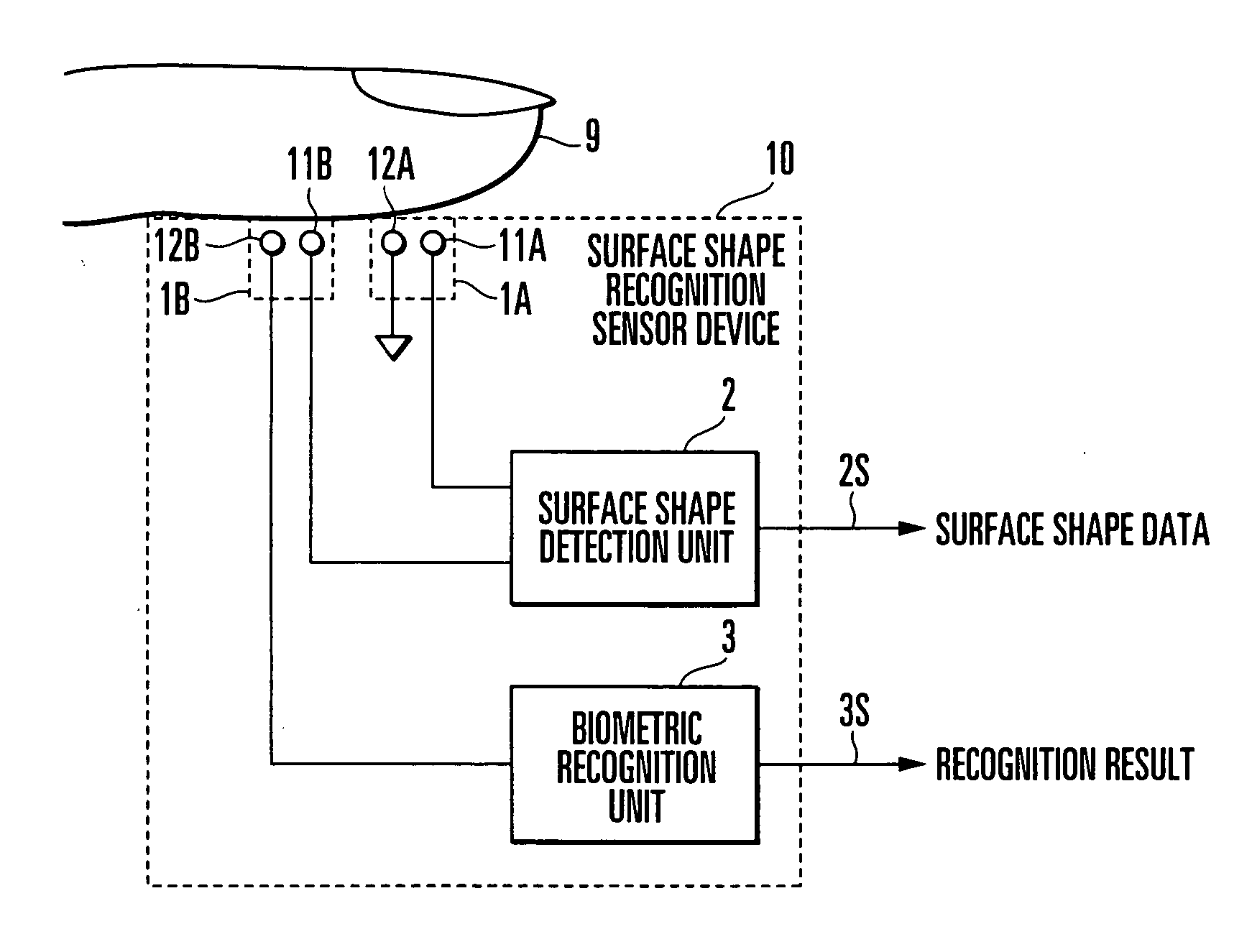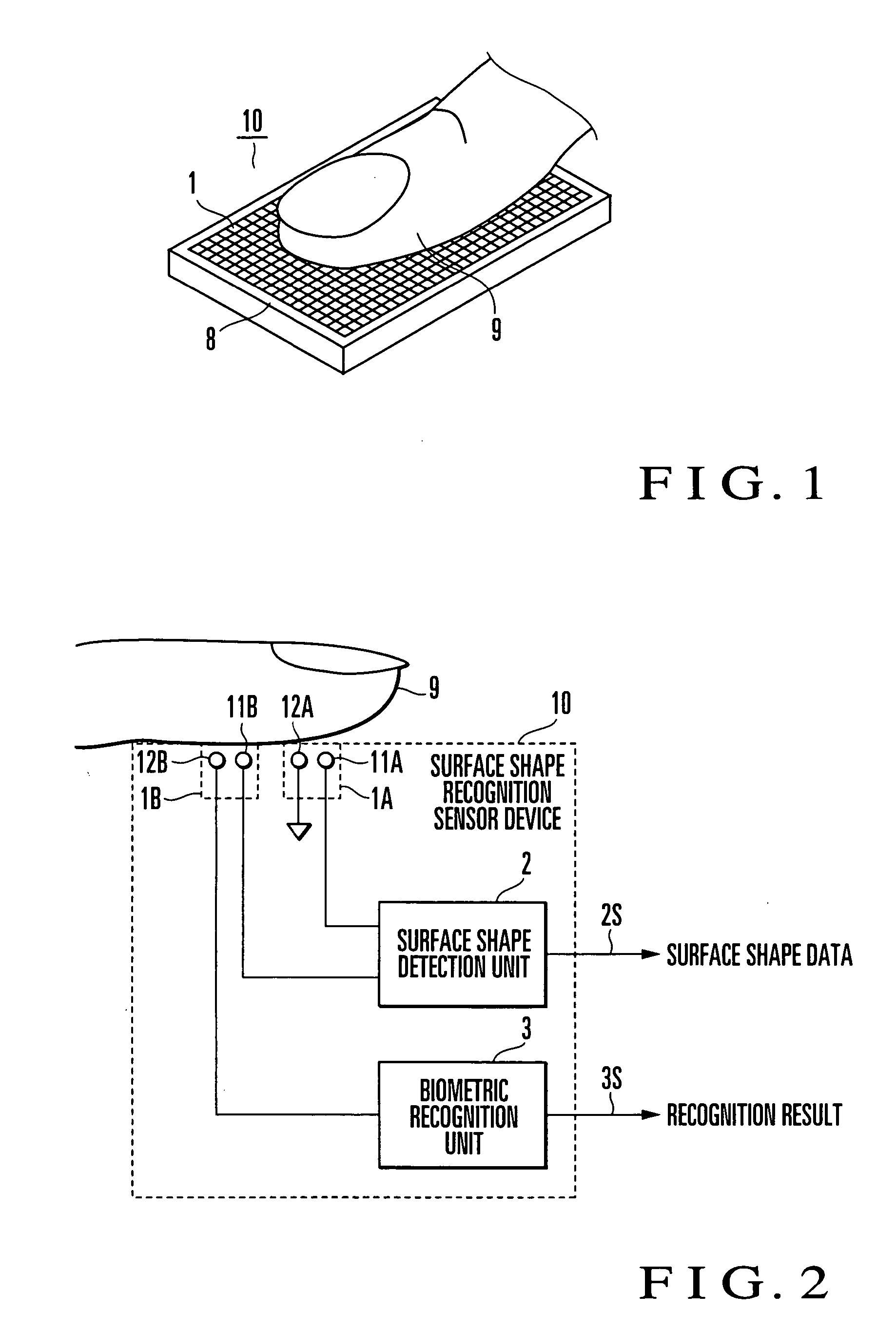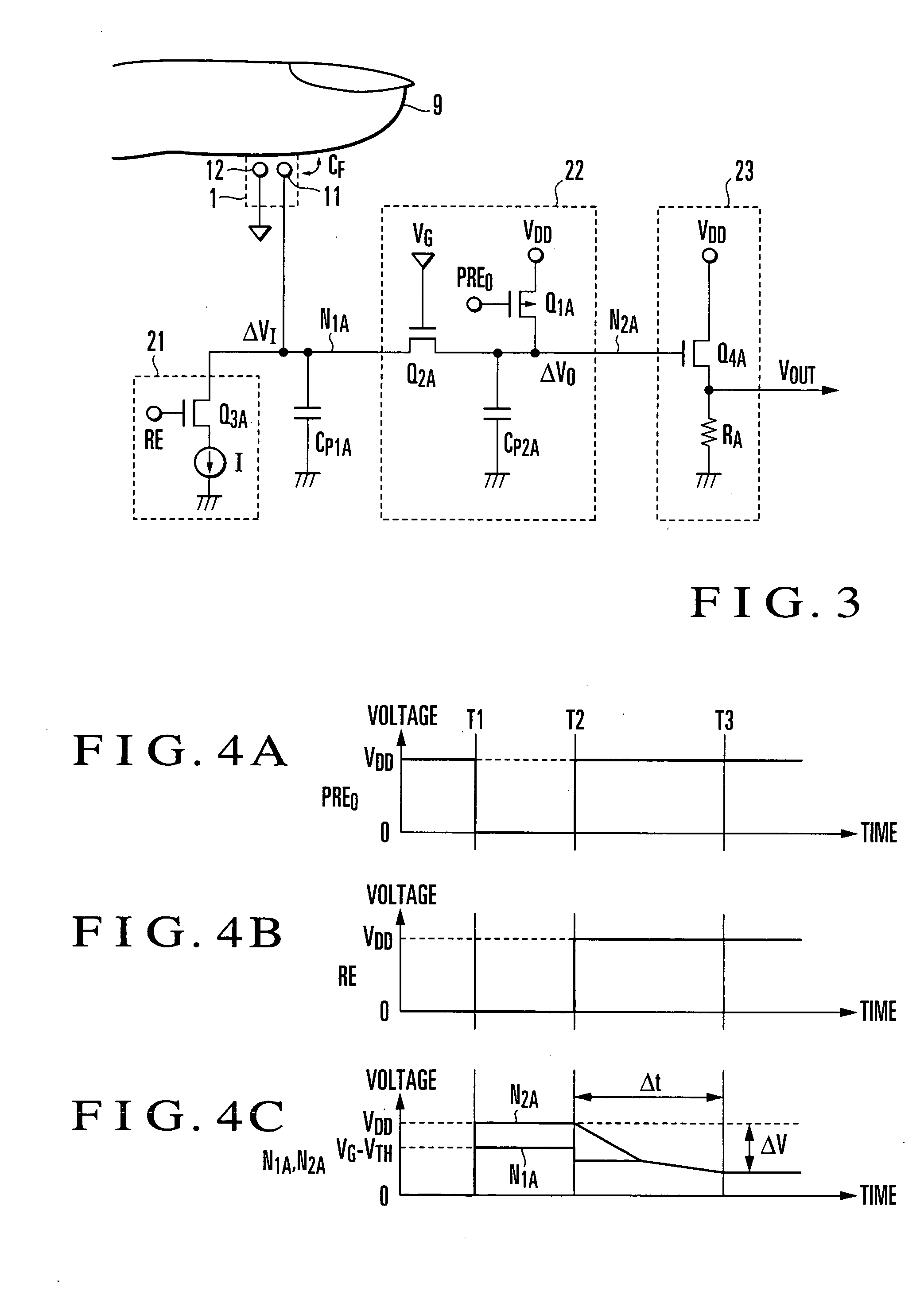Surface shape recognition sensor
a surface shape and sensor technology, applied in the field of biometric recognition, can solve the problems of card missing or theft at high probability, and achieve the effect of accurate biometric recognition, avoiding any increase in device size, and easy implementation of on-chip device formation
- Summary
- Abstract
- Description
- Claims
- Application Information
AI Technical Summary
Benefits of technology
Problems solved by technology
Method used
Image
Examples
first embodiment
[0067] A surface shape recognition sensor device according to the first embodiment of the present invention will be described next with reference to FIG. 2. FIG. 2 is a block diagram showing the arrangement of the surface shape recognition sensor device according to the first embodiment of the present invention.
[0068] A surface shape recognition sensor device 10 includes detection elements 1A and 1B, surface shape detection unit 2, and biometric recognition unit 3.
[0069] The detection element 1A has a detection electrode 11A which forms an electrostatic capacitance with respect to an object 9 through an insulating film, and a detection electrode 12A which comes into electrical contact with the object 9. The detection electrode 11A is connected to the surface shape detection unit 2. The detection electrode 12A is connected to a common potential such as a ground potential. The common potential is supplied from a predetermined supply circuit unit (not shown) such as a power supply ci...
second embodiment
[0105] A surface shape recognition sensor device according to the second embodiment of the present invention will be described next with reference to FIG. 9. FIG. 9 is a block diagram showing the arrangement of the surface shape recognition sensor device according to the second embodiment of the present invention.
[0106] In a surface shape recognition sensor device 10, a detection element 1C is arranged between a detection element 1A and a detection element 1B, unlike the above-described first embodiment (FIG. 2). The remaining parts are the same as in the above-described first embodiment. The same reference numerals as in FIG. 2 denote the same or similar parts in FIG. 9.
[0107] The detection element 1C has a detection electrode 11C which forms an electrostatic capacitance with respect to an object 9 through an insulating film, and a detection electrode 12C which comes into electrical contact with the object 9, like the above-described detection elements 1A and 1B. The detection el...
third embodiment
[0118] A surface shape recognition sensor device according to the third embodiment of the present invention will be described next with reference to FIG. 11. FIG. 11 is a block diagram showing the arrangement of the surface shape recognition sensor device according to the third embodiment of the present invention.
[0119] In a surface shape recognition sensor device 10, a switch 4C is arranged between the common potential and a detection electrode 12C of a detection element 1C, unlike the above-described second embodiment (FIG. 9). The remaining parts are the same as in the above-described second embodiment. The same reference numerals as in FIG. 9 denote the same or similar parts in FIG. 11.
[0120] When a surface shape detection unit 2 executes the surface shape detection operation, the switch 4C is short-circuited to apply the common potential to the detection electrode 12C of the detection element 1C. When a biometric recognition unit 3 executes the biometric recognition operation...
PUM
 Login to View More
Login to View More Abstract
Description
Claims
Application Information
 Login to View More
Login to View More - R&D
- Intellectual Property
- Life Sciences
- Materials
- Tech Scout
- Unparalleled Data Quality
- Higher Quality Content
- 60% Fewer Hallucinations
Browse by: Latest US Patents, China's latest patents, Technical Efficacy Thesaurus, Application Domain, Technology Topic, Popular Technical Reports.
© 2025 PatSnap. All rights reserved.Legal|Privacy policy|Modern Slavery Act Transparency Statement|Sitemap|About US| Contact US: help@patsnap.com



